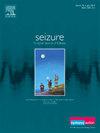癫痫患儿抗癫痫药物依从性的障碍和促进因素:一项使用元人种学的系统综述
IF 2.8
3区 医学
Q2 CLINICAL NEUROLOGY
引用次数: 0
摘要
坚持服用抗癫痫药物对癫痫患儿的发作控制至关重要。然而,多种因素影响依从性,导致不同的治疗结果。本研究的目的是通过综合定性研究来探讨癫痫儿童抗癫痫药物依从性的障碍和促进因素。该系统评价和定性综合遵循了系统评价和Meta分析的首选报告项目(PRISMA)指南。使用关键评估技能程序(CASP)评估纳入研究的质量。在CINAHL、PubMed、SCOPUS、EMBASE、PsycINFO等数据库中进行全面检索。使用元人种学方法提取、分析和综合定性研究。在确定的20项研究中,18项是定性研究,其余2项是混合方法研究。障碍包括令人不快的药物味道、吞咽困难、不良反应、与医疗保健提供者沟通不畅以及耻辱感。促成因素包括合适的药物口味、易于吞咽、公平的医疗保健、对asm的信任以及使用移动技术。研究结果表明,依从性障碍因年龄组而异。年龄较小的儿童主要面临与药物配方有关的挑战,而年龄较大的儿童和青少年则面临与污名有关的障碍。本研究对影响癫痫患儿ASM依从性的复杂因素提供了更深入的了解。通过个性化治疗方法、护理人员教育、改善医疗保健沟通和可获得的医疗保健服务来解决这些障碍,可以增强依从性并改善健康结果。本文章由计算机程序翻译,如有差异,请以英文原文为准。
Barriers and enablers to antiseizure medication adherence in children with Epilepsy: A systematic review using meta-ethnography
Adherence to antiseizure medications (ASMs) is essential for seizure control in children with epilepsy. However, multiple factors influence adherence, leading to varied treatment outcomes. The aim of this study is to explore the barriers and enablers to antiseizure medication adherence in children with epilepsy by synthesising qualitative studies. This systematic review and qualitative synthesis followed the Preferred Reporting Items for Systematic Reviews and Meta Analyses (PRISMA) guidelines. The critical appraisal skills programme (CASP) was used to assess the quality of the included studies. A comprehensive search was conducted in CINAHL, PubMed, SCOPUS, EMBASE, PsycINFO databases. Qualitative studies were extracted, analysed, and synthesised using meta-ethnography approach. Of the 20 studies identified, 18 were qualitative and remaining 2 were mixed method studies. Barriers included unpleasant medication taste, difficulty in swallowing, adverse effects, poor communication with healthcare providers, and stigma. Enablers included suitable taste of medication, easy to swallow, equity to healthcare, trust in ASMs, and access to mobile technology. Findings indicate that adherence barriers differ by age group. Younger children primarily face challenges related to medication formulation, while older children and adolescents experience barriers linked to stigma. This study provides deeper insight into the complex factors affecting ASM adherence in children with epilepsy. Addressing these barriers through individualized treatment approaches, caregiver education, improved healthcare communication, and accessible healthcare services could enhance adherence and improve health outcomes.
求助全文
通过发布文献求助,成功后即可免费获取论文全文。
去求助
来源期刊

Seizure-European Journal of Epilepsy
医学-临床神经学
CiteScore
5.60
自引率
6.70%
发文量
231
审稿时长
34 days
期刊介绍:
Seizure - European Journal of Epilepsy is an international journal owned by Epilepsy Action (the largest member led epilepsy organisation in the UK). It provides a forum for papers on all topics related to epilepsy and seizure disorders.
 求助内容:
求助内容: 应助结果提醒方式:
应助结果提醒方式:


